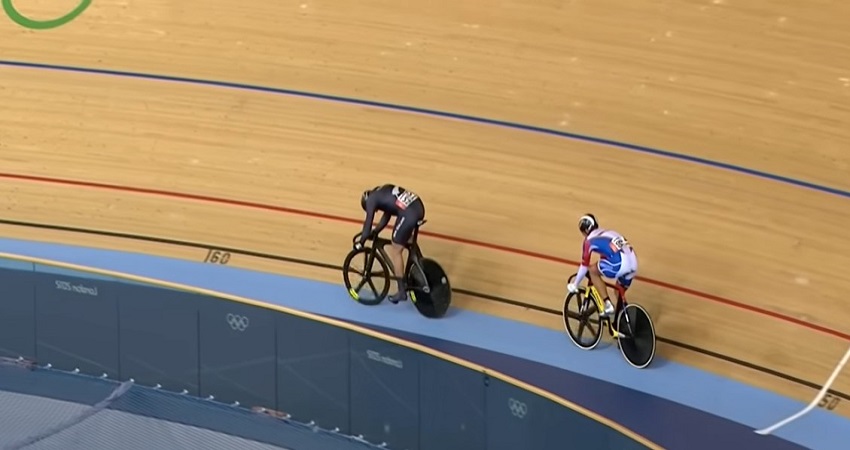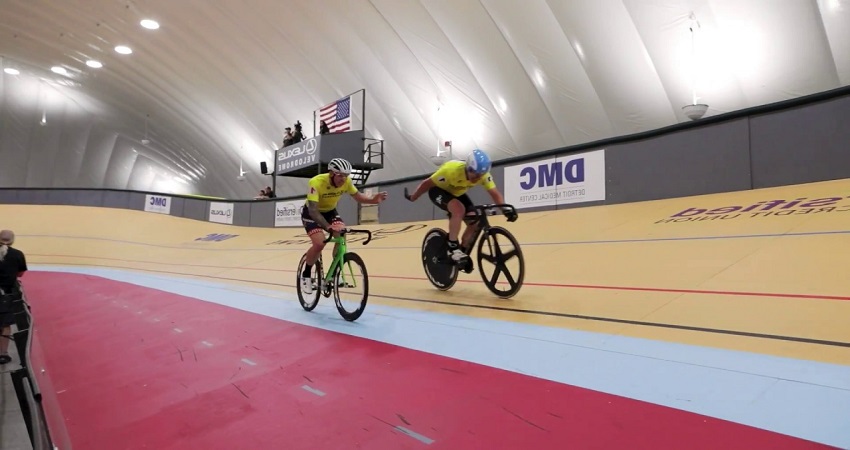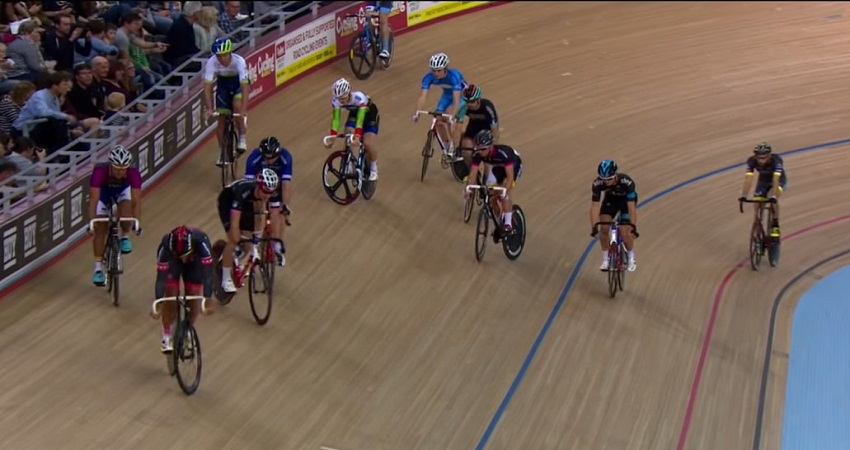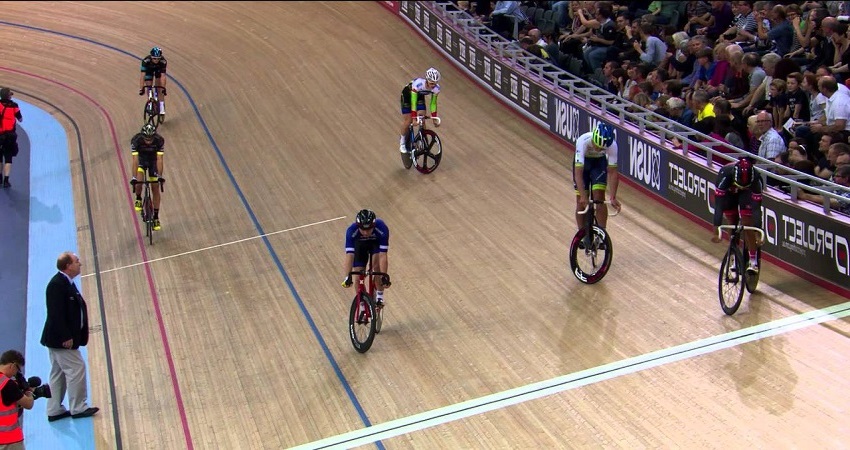
How Fast Do Velodrome Cyclists Go?
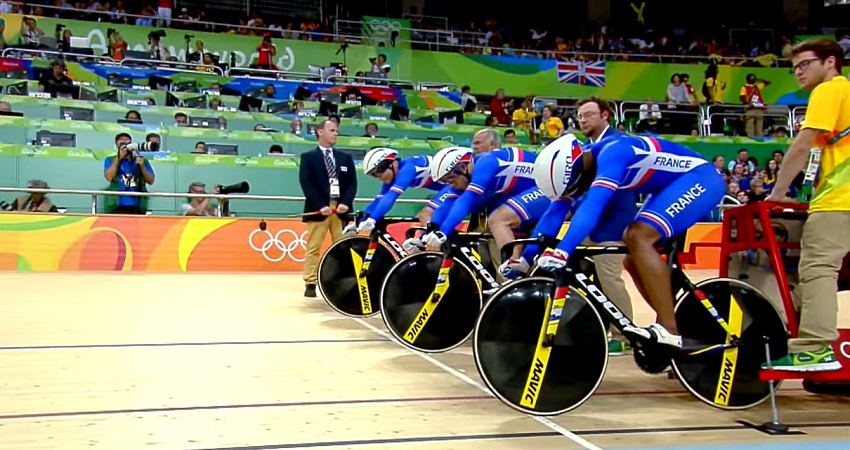
Velodrome cyclists can reach speeds of up to 45 miles per hour. The velodrome is a high-speed arena where cyclists can achieve incredible speeds of up to 45 miles per hour.
These specially designed tracks feature steeply banked curves, allowing racers to navigate them at high velocities without the risk of toppling over. As cyclists pedal furiously, the aerodynamic shape of their bodies and bikes, combined with their physical strength and endurance, propel them to these astonishing speeds.
The velodrome is not only a showcase of incredible skill, agility, and determination but also a testament to human potential in the realm of speed and athleticism. We will delve into the world of velodrome cycling, exploring the factors that contribute to the incredible speeds achieved by these athletes.
Speed Records In Velodrome Cycling
Velodrome cycling is known for its fast-paced and exhilarating nature, with cyclists reaching incredible speeds on the track. In this section, we will explore some of the world record speeds achieved by these daredevils on two wheels and take a closer look at the factors affecting speed in velodrome cycling.
World Record Speeds
The quest for speed has led velodrome cyclists to push the boundaries of human ability and achieve astonishing world record speeds. Here are some of the most impressive feats:
- Men’s 200m Sprint: The current world record for the men’s 200m sprint stands at a mind-boggling 9.347 seconds, achieved by Nicholas Paul of Trinidad and Tobago in 2019.
- Women’s 200m Sprint: The women’s 200m sprint record is held by Lee Wai Sze from Hong Kong, who blazed through the track in an incredible 10.384 seconds.
- Men’s Flying 200m: French cyclist Grégory Baugé holds the men’s flying 200m record with a lightning-fast time of 9.584 seconds.
- Women’s Flying 200m: Meanwhile, the women’s flying 200m record is held by Kristina Vogel from Germany, smashing the distance in just 10.384 seconds.
These world record speeds are a testament to the sheer skill, power, and determination of velodrome cyclists, showcasing their ability to achieve lightning-fast times on the track.
Factors Affecting Speed In Velodrome Cycling
Various factors come into play when it comes to achieving high speeds in velodrome cycling. Let’s take a look at some of the key factors that can affect a cyclist’s velocity:
| Factor | Description |
|---|---|
| Aerodynamics | Cyclists strive to minimize air resistance by adopting streamlined positions and using specialized equipment like aero helmets and skin suits. |
| Track Surface | The track surface plays a crucial role in allowing cyclists to generate maximum speed. Smooth surfaces with low rolling resistance are ideal. |
| Bike Technology | Advancements in bike technology, such as lightweight frames, aerodynamic designs, and high-performance components, contribute to increased speeds. |
| Rider Strength and Speed | The physical capabilities of the cyclist, including strength, power, and overall fitness, play a significant role in attaining top speeds. |
By considering and optimizing these factors, velodrome cyclists can maximize their potential speed and strive for record-breaking performances.
Training For Speed
Training for speed is essential for velodrome cyclists to achieve their maximum performance on the track. This comprehensive training is divided into three key areas: physical conditioning, technique refinement, and equipment optimization.
Physical Conditioning
Physical conditioning plays a vital role in enhancing a velodrome cyclist’s speed. It involves a combination of aerobic and anaerobic exercises to develop cardiovascular endurance and muscle strength. Through regular training, cyclists can improve their power output and sustain high speeds for longer durations.
Cyclists focus on these key aspects of physical conditioning:
- Strength Training: By incorporating weightlifting exercises into their routine, cyclists can develop stronger leg muscles necessary for generating power during sprinting.
- Aerobic Endurance: Endurance exercises like long-distance cycling or interval training improve the cyclist’s ability to maintain speed during longer races.
- Speed Workouts: These intense bursts of speed during training sessions help cyclists enhance their anaerobic capacity, enabling them to accelerate quickly and maintain high speeds for shorter durations.
Technique Refinement
Technique refinement is another crucial aspect of training for speed. Cyclists focus on honing their skills to minimize air resistance and maximize power transfer. Developing an efficient pedaling technique and maintaining proper body positioning helps cyclists reach faster speeds.
Here are some key elements of technique refinement:
- Smooth Pedaling: Cyclists strive for a fluid pedaling motion to minimize energy wastage and maintain a consistent speed.
- Aerodynamic Positioning: By adopting a low and streamlined position on the bike, cyclists reduce wind resistance, allowing them to ride faster with less effort.
- Cornering Skills: Mastering the art of cornering helps cyclists maintain speed while navigating tight turns on the velodrome track.
Equipment Optimization
Optimizing equipment is another critical factor in achieving high speeds on the velodrome track. Cyclists focus on selecting the right bike components, clothing, and accessories that enhance their performance.
Consider the following aspects of equipment optimization:
| Bike Components | Cycling Clothing | Accessories |
|---|---|---|
| Lightweight frame and wheels for reduced weight | Aerodynamic helmets and skin-tight suits to minimize drag | Aerobars for improved stability and reduced wind resistance |
| Stiff and responsive drivetrain for efficient power transfer | Specialized cycling shoes for optimal power transfer | Track-specific tires for enhanced grip and speed |
By investing in top-quality equipment tailored to their specific needs, cyclists can optimize their performance and push their speed to new limits.
Strategies For Speed Improvement
Cycling in a velodrome requires a combination of skill, technique, and speed for cyclists to reach their full potential. To maximize their performance, velodrome cyclists employ various strategies to improve their speed. This article will explore three key areas that significantly impact a cyclist’s speed: aerodynamics, power output, and race tactics.
Aerodynamics
Aerodynamics plays a crucial role in determining a cyclist’s speed on the velodrome. By reducing wind resistance, cyclists can maintain higher speeds with less effort. Here are some key strategies cyclists employ to enhance aerodynamics:
- Using an aerodynamic helmet and clothing to reduce drag.
- Adopting a low and streamlined riding position to minimize air resistance.
- Optimizing bike setup, including frame geometry and handlebar positioning, for improved aerodynamics.
- Installing aerodynamic wheelsets and deep-section rims to decrease turbulence and enhance speed.
Power Output
Strong power output is essential for velodrome cyclists to achieve higher speeds. These strategies can help cyclists maximize their power:
- Building strength through weight training to generate more power during pedal strokes.
- Improving cardiovascular fitness through rigorous endurance training and interval workouts.
- Optimizing pedal technique to maximize power transfer from the legs to the bike.
- Using proper gearing to maintain an efficient cadence that produces the greatest power output.
Race Tactics
Race tactics play a crucial role in achieving faster speeds and outmaneuvering opponents on the velodrome. Successful race tactics involve:
- Strategically positioning oneself within the peloton to conserve energy and draft off other riders.
- Timing and executing well-planned attacks or sprints at the right moments to gain a competitive advantage.
- Anticipating and responding swiftly to opponents’ moves to maintain optimal positioning.
- Analyzing and adapting to the dynamics of the race, such as breakaways, attacks, or changes in pace.
By implementing these strategies, velodrome cyclists can optimize their performance and achieve higher speeds. Whether through enhanced aerodynamics, increased power output, or effective race tactics, cyclists continuously strive to push the boundaries of their speed and achieve podium-worthy results.
Safety Measures In Velodrome Cycling
When it comes to the adrenaline-fueled sport of velodrome cycling, safety is paramount. From the fast speeds attained by cyclists to the design and maintenance of the track, several safety measures ensure the well-being of athletes and spectators. In this blog post, we will explore the different safety measures in velodrome cycling and how they contribute to a secure environment for everyone involved.
Protective Gear
One of the fundamental safety measures in velodrome cycling is the use of appropriate protective gear. Cyclists are equipped with helmets, gloves, and protective clothing to mitigate the impact of any potential accidents. Helmets, in particular, play a vital role in safeguarding the cyclist’s head from severe injuries in case of a fall or collision. The implementation of protective gear helps minimize the risk of serious harm and enhances the overall safety of the sport.
Track Design And Maintenance
Another crucial aspect of safety in velodrome cycling is the meticulous design and regular maintenance of the track. The track surface is composed of wooden boards or concrete, carefully crafted to enable smooth and efficient riding. To ensure optimal safety, the track must be free from any debris, cracks, or uneven surfaces that could pose a hazard to the cyclists. Regular inspections and repairs are conducted to maintain the track’s integrity and minimize the risk of accidents.
The banking or incline of the track also contributes to the safety of velodrome cycling. The higher the banking, the more stability it provides to the cyclists, especially when racing at high speeds. Furthermore, well-designed corners with appropriate gradients allow riders to navigate turns confidently, reducing the chance of slipping or losing control.
Moreover, safety barriers are strategically placed along the perimeter of the track to prevent riders from accidentally veering off course and into the spectator area. These barriers act as a protective barrier and ensure the safety of both cyclists and spectators during intense races.
| Track Safety Measures | Description |
|---|---|
| Regular Track Maintenance | Maintenance checks on the track surface, including repairs and debris removal, ensure a safe riding environment. |
| Safety Barriers | Protective barriers are in place to prevent cyclists from colliding with spectators or straying off course. |
| Banking and Corner Design | The track’s incline and corner design are optimized to enhance stability and control during high-speed races. |
Overall, the safety measures in velodrome cycling encompass both the use of protective gear and the careful design and maintenance of the track. These measures work in tandem to create a secure environment for cyclists to push their limits and spectators to enjoy the exhilarating sport. By prioritizing safety, velodrome cycling manages to strike a balance between thrilling performances and the well-being of all involved.
Evolution Of Velodrome Cycling
In the world of track cycling, speed reigns supreme. Velodrome cyclists push themselves to the limits, propelling their bikes to incredible speeds on the specially designed oval track called a velodrome. Over the years, the sport has undergone significant changes, both in terms of technique and technology, leading to the exhilarating speeds we witness today.
Historical Development
Velodrome cycling can be traced back to the late 19th century, where it quickly gained popularity as a competitive sport. Initially, velodromes were made of cinder or concrete, with steeply banked tracks to allow for high-speed racing. Cyclists relied on sheer physical strength and acquired techniques to navigate the curves at high speeds.
As the sport progressed, advancements in bicycle frame design and specialized riding techniques emerged. Aerodynamics became a crucial factor in achieving higher speeds, leading to the introduction of more streamlined bike designs. Athletes started adopting crouched riding positions to minimize air resistance, enabling them to reach even faster speeds.
During this period, velodrome cycling began attracting crowds with its thrilling displays of speed and skill. Professional cyclists contended in challenging races, breaking records and captivating audiences with their awe-inspiring performances.
Advancements In Velodrome Technology
In recent decades, advancements in velodrome technology have significantly contributed to the increased speeds achieved by cyclists. Modern velodromes are constructed with highly specific materials, such as Siberian pine or laminated wood, providing optimal traction and a smoother riding surface. These surfaces reduce rolling resistance and tire wear, allowing for faster speeds.
Besides the track itself, bicycles used in velodrome racing have also undergone remarkable technological advancements. They are now built with lightweight materials, utilizing carbon fiber frames and aerodynamic components. These improvements help reduce weight and enhance overall efficiency, enabling riders to achieve incredible speeds.
Furthermore, the development of advanced aerodynamic helmets and clothing designed specifically for track cycling further optimizes a cyclist’s position and reduces wind resistance. Every tiny advantage can make a significant difference when it comes to reaching those record-breaking speeds.
Frequently Asked Questions For How Fast Do Velodrome Cyclists Go?
How Fast Do Velodrome Cyclists Go?
Velodrome cyclists can reach speeds of over 50 miles per hour (80 km/h). Their specialized bikes, aerodynamic positions, and smooth, banked tracks allow them to achieve such high velocities. The fastest recorded speed on a velodrome is 85. 7 miles per hour (138.4 km/h).
What Makes Velodrome Cycling So Fast?
Velodrome cycling is exceptionally fast due to various factors. The steeply banked tracks provide gravitational assistance, allowing cyclists to maintain high speeds around the curves. Additionally, the aerodynamic positioning of the cyclists and their specialized bikes, with smooth tires and fixed gears, contribute to their remarkable speeds.
Are Velodrome Cyclists Faster Than Road Cyclists?
Yes, velodrome cyclists are typically faster than road cyclists. The controlled environment of a velodrome, with its smooth, banked track and absence of external obstacles, allows for faster speeds. Road cyclists must contend with factors such as wind resistance, road conditions, and traffic, which can slow them down.
Conclusion
Velodrome cyclists achieve incredible speeds on the track, thanks to their exceptional skill and training. With an average speed of around 40 to 45 miles per hour, these athletes push the boundaries of human performance. The aerodynamic design of the Velodrome track and the specialized bikes used by these cyclists contribute to their impressive velocities.
The world of Velodrome cycling is truly awe-inspiring, showcasing the immense power and agility of these athletes. So, if you’re ever in awe of their speed, remember the dedication and hard work it takes to reach these remarkable velocities.
